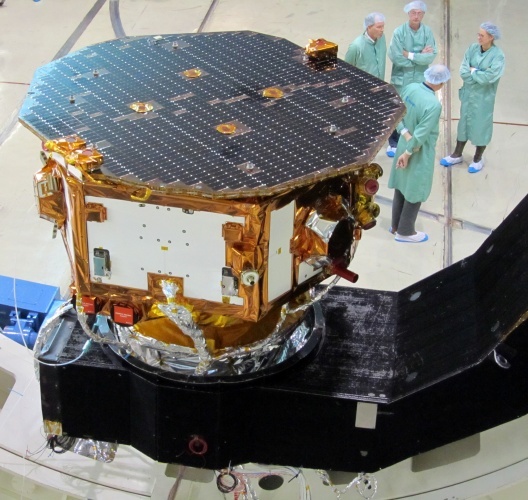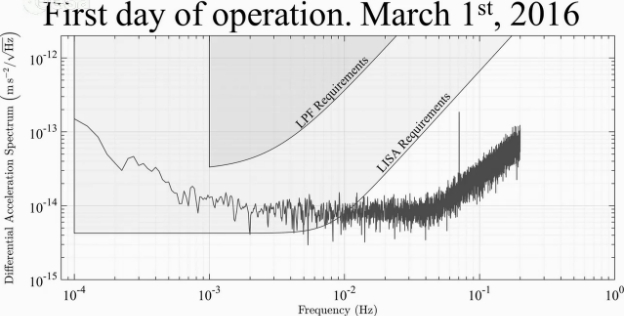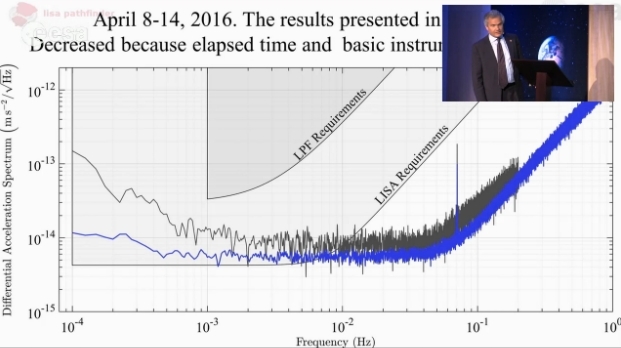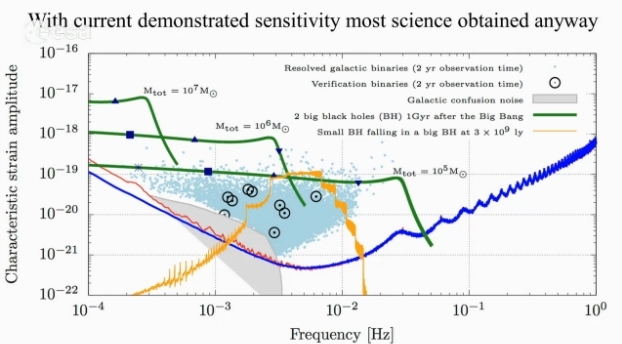Big smile from little femtometers: LISA Pathfinder exceeded expectations

A femtometer is 10 -15 meters. For clarity, the diameter of the proton is approximately 1.7 femtometers. 10 -14 m / s 2 is one millionth of one billionth acceleration due to gravity on Earth. And precisely this accuracy, at least five times higher than originally planned, was shown by the technological demonstrator of the gravity telescope LISA Pathfinder.
Small introduction

LISA Pathfinder is a device for testing the possibility of a very accurate measurement of the gravitational effect on test masses - two cubes of gold and platinum alloy hanging in space. On cubes, ideally, only the curvature of space-time by gravity acts. The probe, together with all the equipment, hangs in space without touching the cubes, compensating for low thrust engines the pressure of the solar wind and other disturbances. The position of the cubes is very accurately measured by a special laser interferometer. In more detail the design of the probe with pictures is described here .
Plans and Results
')

This graph shows the sensitivity depending on the frequency. The analogy with sound is quite correct - the colliding objects of different masses will gravitationally “sound” at different frequencies, some higher, some lower. LPF Requirements - calculated sensitivity values for LISA Patfinder. LISA Requirements - requirements for the future LISA gravity detector of three probes. Line - one millionth of one billion acceleration of free fall on Earth.
The very first inclusion on March 1, 2016 caused big and wide smiles on the faces of scientists - LISA Pathfinder exceeded the calculated parameters in sensitivity!

Within a month, the probe was tuned, removing obvious technical interference, and the sensitivity became even better, at high frequencies being higher than what is required for a full-fledged detector:

Interestingly, since then, scientists and engineers have understood the sources of interference, and it turned out that, depending on the frequency, they are caused by three reasons:

In the left part, at low frequencies, the design of the device itself interferes. Engines, electronics work, even from star sensors, which are actually digital cameras without heavy moving parts, noise still goes on.
In the middle part, noise arises from individual molecules crashing into cubes. Despite the fact that the container with cubes is open to vacuum and the pressure there is practically zero, the individual molecules of air from the Earth have not yet managed to fly out, and interfere with observations. Fortunately, over time, they are less and less, and in this frequency range, the accuracy increases by itself:

The red line is sensitive in May, it is better than the blue line of April
And finally, in the upper part, the noise arises from the interferometer — in reality, the cubes do not move, but the device shows phantom movement due to its own noise.
With such accuracy, the LISA detector will be able to see gravitational events occurring over billions of light years:

The yellow line on the graph is the fall of a small black hole into a large one at a distance of 3 billion light years. And the collision of two galaxies with black holes in the center of LISA will be able to see over 12 billion light years. It is close to the Big Bang. And if thanks to the Hubble telescope we can see very distant ancient galaxies, then gravitational astronomy will allow us to peep even at a time when the Universe was opaque (the first time after the Big Bang, the substance in the Universe was so close to each other that the photons could not fly far) .

The estimated collision of galaxies should be much “louder” than the sensitivity of LISA
A couple of interesting facts.
In early June, scientists from the LISA Pathfinder project answered questions on Reddit, and from those dialogues we learned some more interesting things.
First of all, the "iron" of the project works perfectly, the first set of engines is still working (there are two sets on the probe).
The solar wind pressure at LISA Patfinder is 28 micronewtons.
The reason for the interference, giving the peak in the right part of the graph has not yet been established, but scientists suspect interference from the equipment. Over time, they want to collect telemetry on a different frequency in order to establish the exact cause and eliminate it.
Future
Despite the huge success of LISA Pathfinder and the desire that the gravitational telescope peer into the secrets of the Universe right now, you should not forget that a full-scale detector of three vehicles should appear only in 2034, and, given the constant displacement of complex technical projects in terms of time, that later. Despite the success of instruments for measuring gravitational effects, not all the technologies required for LISA have been created. For example, we (humanity) do not yet know how to connect three probes at a distance of several million kilometers from each other with laser beams in order to very accurately measure the distance and transmit data.
Sources
The material was created from the following sources:
Source: https://habr.com/ru/post/395401/
All Articles